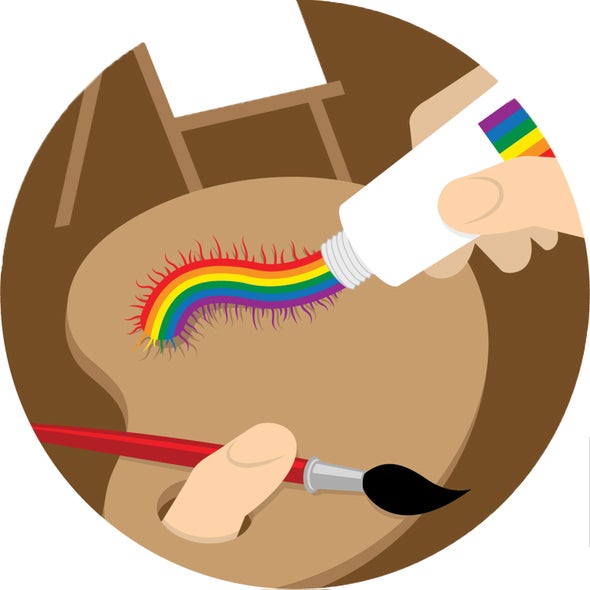Researchers have modified a common bacterium to spit out an entire rainbow of dyes for food, clothing, cosmetics, and more. The proof-of-concept research also detailed the natural production of two colors—green and navy blue—for the first time.
Some dyes can be produced naturally from plants. Indigo, for example, is extracted from leaves of species in the genus Indigofera. But the task is labor-intensive, with variable results. Synthetic alternatives can involve toxic precursors and by-products, sometimes released as pollutants. And consumers are willing to pay more for natural colorants, says Sang Yup Lee, a chemical and biomolecular engineer at the Korea Advanced Institute of Science and Technology. So he and his colleagues set out to engineer Escherichia coli to make seven natural hues.
The researchers not only had to tweak the microbes by adding specific genes to produce the dyes, they also had to help the bacteria push the colors out into the world. Because the involved dyes are hydrophobic (water-repellent), they typically cannot pass through bacterial cell membranes; they would instead accumulate inside the cell and ultimately kill it. Synthetic biology researchers seeking to produce self-sustaining “cell factories” for chemicals have long been stymied by this problem.
Lee and his team genetically altered their E. coli, first to grow longer cells and then to convert some of the extra membrane surface area into sacs that could encircle and expel the accumulated chemicals. Rather than cutting out the relevant genes entirely, which might in some instances kill the bacteria, they introduced small RNA sequences that “silenced” such undesired but essential genes. They also inserted a human gene that caused the bacteria to form microscopic pouches on their membranes for even greater surface area. The complete process is described in Advanced Science.
Lee says that his E. coli production method has no toxic properties and could be incorporated into industry today—but that “some colors will be more expensive because the [concentrations] are still quite low and difficult to produce.”
The new technique could eventually help engineer microbes to produce hydrophobic antibiotics, says Duke University biochemist Meta Kuehn, who was not involved in the research. This capability “would be tremendous as far as a good source for producing some really difficult-to-synthesize antibiotics,” she says.
Lee has worked on metabolic engineering for 26 years and describes these rainbow food and clothing dyes as his latest forays into industrial chemical production—which have also included making compounds involved in cosmetics and pharmaceuticals. It's a running joke among his colleagues, he adds with a smile, that his goal is to produce every compound in the chemists' go-to Sigma-Aldrich catalog.


